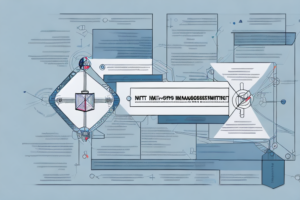What are the 11 principles of risk management?
8 min read
A tree with 11 branches
Risk management is the process of identifying, analyzing, assessing and controlling potential risks that could affect an organization’s objectives. The 11 principles of risk management provide a framework for organizations to handle risks effectively and efficiently. This article provides a detailed analysis of each of the principles and how they can be implemented in an organization’s risk management plan.
Understanding the basics of risk management
Before delving into the principles of risk management, it is important to understand the basics of this process. The first step in risk management is identifying potential risks that could hinder an organization’s objectives. Once the risks have been identified, they need to be analyzed and assessed to determine the likelihood and severity of the impact they could have on the organization. Based on this analysis, a risk management plan can be developed to proactively manage and mitigate potential risks.
It is important to note that risk management is an ongoing process that requires constant monitoring and evaluation. As new risks emerge or existing risks evolve, the risk management plan must be updated and adjusted accordingly. Effective risk management also involves communication and collaboration among all stakeholders, including employees, management, and external partners. By implementing a comprehensive risk management strategy, organizations can minimize potential losses and protect their reputation and financial stability.
The importance of risk management in business
Risk management is essential for any organization that wants to achieve its objectives while minimizing potential threats. By taking a proactive approach towards managing risks, organizations can avoid costly mistakes, improve decision-making processes, and protect their reputation. Effective risk management also helps organizations comply with regulations and provide assurance to stakeholders.
One of the key benefits of risk management is that it enables organizations to identify potential risks before they occur. This allows them to take appropriate measures to mitigate the risks and prevent them from turning into major issues. By having a clear understanding of the risks that they face, organizations can also prioritize their resources and focus on the areas that require the most attention.
Another important aspect of risk management is that it helps organizations to be more resilient in the face of unexpected events. By having a robust risk management framework in place, organizations can respond quickly and effectively to crises, minimizing the impact on their operations and reputation. This can be particularly important in industries that are prone to disruption, such as finance, healthcare, and technology.
The history of risk management: How it all began
The concept of risk management has existed since ancient times, when traders would share the risks of their cargo by spreading it across multiple ships. However, the modern concept of risk management emerged in the 20th century, with the development of insurance and the growth of multinational corporations. Today, risk management has become an integral part of organizational strategy and is practiced by businesses of all sizes and types.
One of the earliest recorded examples of risk management can be traced back to the Babylonians, who developed a system of risk transfer through the use of loans. In the event of a crop failure or other disaster, the loans would be forgiven, allowing the borrower to avoid financial ruin. This system was later adopted by the Greeks and Romans, who used it to finance military campaigns and other ventures.
In the modern era, risk management has become increasingly complex, with the rise of new technologies and the globalization of business. Today, risk managers must contend with a wide range of threats, from cyber attacks and natural disasters to supply chain disruptions and reputational damage. Despite these challenges, the principles of risk management remain the same: identify potential risks, assess their likelihood and impact, and develop strategies to mitigate or avoid them.
The need for an effective risk management plan
Without an effective risk management plan, organizations can be vulnerable to a variety of threats. Risks such as cyber-attacks, natural disasters, financial frauds, and supply chain disruptions can have serious consequences. An effective risk management plan helps organizations proactively identify and manage potential risks, ensuring continuity of operations and protection of stakeholders.
Moreover, an effective risk management plan can also help organizations save costs in the long run. By identifying potential risks and taking preventive measures, organizations can avoid costly damages and losses. Additionally, having a risk management plan in place can also improve an organization’s reputation and credibility, as stakeholders will have confidence in the organization’s ability to handle potential risks.
Identifying risks: Types and categories
Identifying potential risks is the first step in the risk management process. Risks can be categorized into different types based on the nature of the threat they pose. These include technological risks, operational risks, strategic risks, financial risks, legal and regulatory risks, and reputational risks.
It is important to note that risks can also be categorized into different categories based on their likelihood and impact. High-impact risks are those that can have a significant negative impact on the organization, while low-impact risks may have a minimal impact. Similarly, high-likelihood risks are those that are more likely to occur, while low-likelihood risks are less likely to occur. By categorizing risks based on both their nature and their likelihood and impact, organizations can prioritize their risk management efforts and allocate resources accordingly.
The 11 principles of risk management: An in-depth analysis
The 11 principles of risk management provide a framework for organizations to manage potential risks effectively. These principles are:
Principle 1 – Risk Management Framework
The first principle of risk management requires organizations to establish a governance framework for managing risks. This includes defining roles and responsibilities, establishing policies and procedures, and ensuring communication and coordination across the organization.
Principle 2 – Risk Appetite
The second principle requires organizations to set their risk appetite, which defines the level of risk they are willing to accept in pursuit of their goals. This requires a clear understanding of the organization’s objectives, risk tolerance, and risk preferences.
Principle 3 – Role of the Board and Senior Management
The third principle of risk management emphasizes the importance of the board and senior management in establishing and implementing a robust risk management plan. This includes ensuring that the organization’s risk appetite is aligned with its strategic objectives, providing oversight of the risk management plan, and ensuring that the necessary resources are available to manage risks effectively.
Principle 4 – Integrating Risk Management into Business Processes
The fourth principle of risk management requires organizations to integrate risk management into their business processes. This includes ensuring that risk management is integrated into strategic decision-making processes, project management processes, and other key business processes.
Principle 5 – Reporting and Monitoring Risks
The fifth principle of risk management requires organizations to establish a process for reporting and monitoring risks. This includes ensuring that risks are reported in a timely manner, that key stakeholders are kept informed, and that risk management performance is regularly monitored.
Principle 6 – Risk Culture and Awareness
The sixth principle of risk management emphasizes the importance of establishing a risk culture within the organization. This includes ensuring that all employees understand the importance of risk management, that risk management is embedded in the organization’s culture, and that everyone is accountable for managing risks.
Principle 7 – Risk Assessment Methods
The seventh principle of risk management requires organizations to use appropriate methods to assess potential risks. This includes using quantitative and qualitative techniques to identify and assess risks, and using scenario analysis and stress testing to understand potential impacts.
Principle 8 – Treatment Options for Risks
The eighth principle of risk management requires organizations to develop appropriate treatment options for potential risks. This includes deciding whether to accept, avoid, mitigate, or transfer risks, and developing appropriate risk mitigation strategies.
Principle 9 – Communication and Consultation with Stakeholders
The ninth principle of risk management requires organizations to communicate and consult with stakeholders. This includes communicating risks to stakeholders in a clear and concise manner, seeking input from relevant stakeholders, and ensuring that stakeholder interests are taken into account in the risk management process.
Principle 10 – Reviewing and Continuous Improvement of the Risk Management Plan
The tenth principle of risk management requires organizations to regularly review and improve their risk management plan. This includes reviewing the effectiveness of risk management processes, identifying areas for improvement, and making necessary changes to the risk management plan.
Principle 11 – Embedding Risk Management in Decision-Making Processes
The eleventh principle of risk management requires organizations to embed risk management in their decision-making processes. This includes ensuring that risks are considered in all key decisions, that decisions are aligned with the organization’s risk appetite, and that decision-makers are equipped with the necessary risk management skills and knowledge.
Effective risk management is crucial for organizations to achieve their objectives and avoid potential losses. By implementing the 11 principles of risk management, organizations can establish a comprehensive risk management plan that covers all aspects of their operations. This plan should be regularly reviewed and updated to ensure that it remains effective in managing potential risks. By embedding risk management into their culture and decision-making processes, organizations can create a proactive approach to risk management that helps them to identify and mitigate potential risks before they become major issues.
Common challenges faced while implementing risk management plans
Implementing an effective risk management plan can be a challenging process. Some of the common challenges organizations face include lack of resources, inadequate risk culture, resistance to change, and difficulty in defining risk appetite. It is important for organizations to anticipate and address these challenges in order to successfully implement their risk management plan.
One of the additional challenges that organizations face while implementing risk management plans is the lack of buy-in from senior management. Without the support of senior management, it can be difficult to allocate resources and implement changes necessary for effective risk management. It is important for organizations to communicate the benefits of risk management to senior management and involve them in the process.
Another challenge that organizations face is the complexity of risk management frameworks. Many organizations struggle with selecting and implementing the appropriate risk management framework for their specific needs. It is important for organizations to conduct thorough research and seek expert advice to ensure that they are using the most appropriate framework for their organization.
Best practices for effective risk management planning
There are several best practices that organizations can adopt to ensure effective risk management planning. These include engaging all stakeholders in the risk management process, making risk management an integral part of the organization’s culture, ensuring that risk management is aligned with strategic objectives, and continuously monitoring and reviewing the risk management plan.
Real-life examples of successful risk management strategies in businesses
There are many examples of businesses that have successfully implemented risk management strategies. One such example is Proctor & Gamble (P&G), which has a comprehensive risk management plan that includes identifying, prioritizing, and mitigating potential risks. P&G also regularly reviews and updates its risk management plan to ensure it remains effective in managing the organization’s risks.
How to train employees to handle risks effectively
Training employees to handle risks effectively is an important aspect of risk management. This includes providing employees with the necessary knowledge and skills to identify, assess, and manage risks. Training should also focus on developing a risk-aware culture within the organization, and providing employees with the necessary tools and resources to effectively manage risks.
Conclusion:
The 11 principles of risk management provide a comprehensive framework for organizations to manage potential risks. By adopting these principles and implementing an effective risk management plan, organizations can proactively identify and manage potential threats, ensuring the continuity of operations and protecting stakeholder interests. Effective risk management requires a commitment from all levels of the organization and should be an integral part of the organization’s culture and strategy.



